Southeastern Naturalist
405
M.A. Burt and L.A. Brudvig
22001199 SOUTHEASTERN NATURALIST 1V8o(3l.) :1480,5 N–4o1. 83
Pollen Limitation and Self-Compatibility in Three Pine
Savanna Herbs
Melissa A. Burt1,* and Lars A. Brudvig2
Abstract - There is substantial interest in the restoration of the Pinus palustris (Longleaf
Pine) savannas in the southeastern US Coastal Plain, one of the most endangered ecosystems
in the world and also home to a diverse plant assemblage. Better understanding of
the pollination ecology of these plants is necessary for their successful conservation and
restoration. In this study, we assessed the rates of self-compatibility and pollen limitation
in Carphephorus bellidifolius (Sandywoods Chaffhead), Liatris squarrulosa (Appalachian
Blazing Star), and Aristida beyrichiana (Wiregrass)—3 perennial understory herbaceous
species of conservation interest. We measured self-compatibility with a pollination-exclusion–
bag experiment and pollen limitation with a pollen-supplementation experiment
within South Carolina populations. We found no evidence of pollen limitation in any of
these 3 species. This result is surprising given the high incidence of pollen limitation typically
found in other study systems. Our pollination-exclusion bag experiment showed that
Sandywoods Chaffhead likely requires out-cross pollen for successful pollination, whereas
both Appalachian Blazing Star and Wiregrass appear to exhibit at least low levels of selfcompatibility.
Taken together, our results may indicate that the active management of the
Longleaf Pine ecosystem with prescribed fire and overstory tree removal has supported sufficient
pollination in these plant populations.
Introduction
Currently reduced to less than 3% of their original range, Pinus palustris Mill.
(Longleaf Pine) ecosystems are among the most endangered habitats in North
America (Frost 2006; Noss 1988, 2013; Outcalt 2000; Outcalt and Sheffield 1996).
Longleaf Pine ecosystems are part of the southeastern US Coastal Plain biodiversity
hotspot and support species-rich plant assemblages, including at least 191 endemic
species (Hardin and White 1989, Noss 2013, Noss et al. 2014, Peet and Allard
1993). Most of this diversity is contained in the shrubby and herbaceous ground
layer, which can support >50 plant species per square meter (Walker and Peete
1984). As a result, there is substantial interest in the conservation and restoration
of Longleaf Pine ecosystems (Brudvig et al. 2014, Noss 2013, Noss et al. 2014,
Walker and Silletti 2005). Given the interest in re-introducing these populations
(Frost 2006, Walker and Silletti 2005), and the fragmented nature of Longleaf Pine
landscapes (Frost 2006), an understanding of the pollination biology of ground
layer species will be critical to assist these conservation and restoration efforts.
1Kellogg Biological Station, Michigan State University, Hickory Corners, MI 49060.
2Department of Plant Biology and Program in Ecology, Evolutionary Biology, and Behavior,
Michigan State University, East Lansing, MI 48824. *Corresponding author
- melissa.ann.burt@gmail.com.
Manuscript Editor: Justin Hart
Southeastern Naturalist
M.A. Burt and L.A. Brudvig
2019 Vol. 18, No. 3
406
An understanding of pollination ecology is essential for the successful conservation
and restoration of plant diversity (Schemske et al. 1994). Reductions
in plant population size and increased isolation among populations from habitat
loss, fragmentation, and the creation of small founder populations during reintroduction
can affect pollen transfer among individuals (e.g., Aguilar et al. 2006,
Rusterholz and Baur 2010, Winfree et al. 2009). As a result, pollen limitation
may develop when receipt of pollen is insufficient for adequate seed or fruit
production, which, in turn, may affect population growth or persistence. Such effects
will be most pronounced in obligate out-crossing species (i.e., species that
require pollen from other individuals for successful fertilization) and less or not
evident in species that are capable of self-pollination (Burd 1994, Larson and
Barrett 2000, Schemske et al. 1994). Yet, the details of the pollination ecology
of many plant species remain unknown (e.g., self-compatibility and evidence for
pollen limitation), and further studies are needed to assess the extent to which
pollen limitation may be an important consideration during conservation and restoration
activities.
Pollen limitation is a well-documented, widespread phenomenon in flowering
plants. In fact, reviews and syntheses on the topic have reported that pollen limitation
occurs in a majority of published cases, with an estimated 62–73% of plant
species exhibiting pollen limitation at some time or place (Ashman et al. 2004,
Burd 1994, Knight et al. 2005, Larson and Barrett 2000). As a result of lower seed
production, species subject to pollen limitation may subsequently undergo a variety
of demographic consequences due to low levels of subsequent recruitment, potentially
leading to a reduction in population size. Pollen limitation over long periods
of time may even result in evolutionary changes, such as the ability to self-fertilize
(Vallejo-Marín and Uyenoyama 2004).
We experimentally assessed the degrees of pollen limitation and self-compatibility
in 3 understory herbs associated with the Longleaf Pine ecosystem:
Carphephorus bellidifolius (Michx.) Torr. and A. Gray, (Asteraceae; Sandywoods
Chaffhead), Liatris squarrulosa (Green) K. Schum (= L. earlei [Greene]
K. Schum.) (Asteraceae; Appalachian Blazing Star), and Aristida beyrichiana
Trin. and Rupr. (Poaceae; Wiregrass); taxonomy according to Radford et al.
(1968). To our knowledge, pollen limitation and self-compatibility have not been
investigated in these species. We focused on these species because they are indicative
of high quality (e.g., frequently burned, lacking agricultural histories)
Longleaf Pine sites (Brudvig and Damschen 2011, Brudvig et al. 2014). Moreover,
these species constitute major herbaceous life forms present in Longleaf
Pine understory communities (graminoids and forbs), including the dominant
bunchgrass, Wiregrass, which is often a focal species during understory reintroduction
efforts (Aschenbach et al. 2010, Walker and Silletti 2005). Specifically,
we asked: (1) What is the magnitude of self-compatibility in Sandywoods Chaffhead,
Appalachian Blazing Star, and Wiregrass? and (2) Are populations of these
species pollen limited?
Southeastern Naturalist
407
M.A. Burt and L.A. Brudvig
2019 Vol. 18, No. 3
Field-site Description
We performed this experiment at the Savannah River Site (SRS), a Department
of Energy National Environmental Research Park located near Aiken, SC (33°12'N,
81°24'W). SRS contains thousands of hectares of upland Longleaf Pine savannas
undergoing restoration through prescribed fire and overstory tree thinning. We
worked at 5 locations at SRS, to evaluate 2 populations for each of the 3 study
species. Both populations of Sandywoods Chaffhead and Appalachian Blazing
Star and 1 population of Wiregrass were naturally occurring populations located
within remnant (i.e., no known history of use as a plowed farm field) Longleaf Pine
restoration areas that supported canopies with cover varying from 29.8% to 41.8%
(mean = 36.3%; data from Brudvig and Damschen 2011). Our second Wiregrass
population consisted of planted individuals used in seed-production efforts, located
in a largely treeless field that is burned annually. Sites were underlain by sandy
soil series: Ailey, Blanton, Lucy, Troup, and Vaucluse (USDA-NRCS 2012). Each
population contained at least 50 individuals.
Methods
Study species
We assessed pollen limitation and self-compatibility for 3 perennial herbaceous
species that can be found in sandy uplands of the Longleaf Pine ecosystem: Sandywoods
Chaffhead, Appalachian Blazing Star, and Wiregrass. Both Sandywoods
Chaffhead and Appalachian Blazing Star are forbs that form basal rosettes, whereas
Wiregrass is a bunchgrass; none of these species is known to be clonal. Based on
plant family, floral morphology, and our field observations, Sandywoods Chaffhead
and Appalachian Blazing Star are pollinated by insects, whereas Wiregrass is
wind-pollinated. When mature, Sandywoods Chaffhead produces flowering stalks
containing an average of 39.5 (max = 374) inflorescences, each of which contains
an average of 20.6 (min–max = 2–71) flowers (based on n = 275 individuals; L.A.
Brudvig, unpubl. data). When mature, Appalachian Blazing Star produces flowering
stalks containing an average of 11.4 (max = 117) inflorescences, each of which
contains an average of 13.3 (min–max = 5–28) flowers (based on n = 237 individuals
at SRS; L.A. Brudvig, unpubl. data). When mature, Wiregrass produces culms
containing an average of 35.1 (max = 279) inflorescences, each of which contains
an average of 66.9 (min–max = 9–184) flowers (based on n = 286 individuals at
SRS; L.A. Brudvig, unpubl. data). Sandywoods Chaffhead flowers from August
through October, Appalachian Blazing Star flowers from September through October,
and Wiregrass flowers from September through November (Radford et al.
1968).
Experimental methodology
Prior to anther dehiscence (opening of the anther for dispersal of pollen), we
haphazardly selected 10 individuals within each population of each of our 3 focal
species. To determine self-compatibility and degree of pollen limitation, we
Southeastern Naturalist
M.A. Burt and L.A. Brudvig
2019 Vol. 18, No. 3
408
applied each of the following 4 treatments to a randomly chosen inflorescences on
each individual plant: (1) outcross-pollen supplementation, (2) non-manipulated
natural pollination control (control for outcross pollen supplementation treatment),
(3) pollination-exclusion bag, and (4) leaky bag control (i.e., a pollination-exclusion
bag with holes to serve as a control for pollination-exclusion bag treatment).
We monitored inflorescences every 2–3 d for anther dehiscence. We conducted our
experiments from October 2009 through January 2010.
We assessed pollen limitation by comparing the outcross pollen supplementation
and non-manipulated natural-pollination control treatments (Bierzychudek 1981).
We collected supplemental pollen from the anthers of open inflorescences of at least
10 plants located within each population, but at least 10 m away from experimental
plants (Kearns and Inouye 1993). We did not collect supplemental pollen from
individuals that had been selected for our pollen limitation and self-compatibility
experiments. On the day it was to be used, we collected pollen by sweeping anthers
of recently dehisced inflorescences with a paintbrush and allowing the pollen to fall
into a petri dish. After homogenizing the pollen within the petri dish, we applied
the supplemental pollen to the stigmas in the inflorescences pre viously marked for
the outcross pollen supplementation experiment. We monitored supplemented and
control inflorescences every 2–3 days until seeds were visibly mature. Upon maturation,
we collected the inflorescences, counted all reproductive structures (achene
or caryopsis), and determined whether or not each reproductive structure contained
a seed by squeezing it with forceps. We concluded that individuals within each
population were pollen limited when outcross-pollen–supplemented inflorescences
produced more seeds or fruit than non-manipulated controls (Bierzychudek 1981,
Kearns and Inouye 1993, Young and Young 1992).
We assessed self-compatibility with an experiment to compare the use of
pollination-exclusion bags with self pollen applied to the inflorescences within
(hereafter, referred to as pollination-exclusion bag) and leaky-bag control treatments
(hereafter referred to simply as control treatments) (Kearns and Inouye
1993). To prevent outcross pollen from coming in contact with floral structures by
pollinator or wind, we covered inflorescences with pollination-exclusion bags made
of white chiffon fabric. For Sandywoods Chaffhead and Wiregrass, we attached
the pollination-exclusion bags to a wire frame affixed to a bamboo stake that had
been pushed into the ground in order to prevent the pollination-exclusion bags
from weighing down the inflorescence. We attached the pollination-exclusion
bags directly to Appalachian Blazing Star inflorescences without a wire frame because
the stems were sturdy enough to support them. Also, Appalachian Blazing
Star inflorescences are typically located along the plant’s stem attached with little
to no petiole, which made it difficult to attach a wire frame. After installing the
pollination-exclusion bags on previously designated inflorescences prior to dehiscence,
we monitored the inflorescences for anther dehiscence every 2–3 days. Upon
dehiscence, we hand-pollinated the inflorescence with self-pollen to ensure the
transfer of self pollen from anther to stigma. For the control treatment, we attached
a leaky bag to another randomly selected inflorescence. As in the pollen limitation
Southeastern Naturalist
409
M.A. Burt and L.A. Brudvig
2019 Vol. 18, No. 3
experiment, we monitored inflorescences every 2–3 days for seed maturation and
collected inflorescences when seeds matured. We compared the number of seeds
formed on the inflorescences in the pollination-exclusion bag to those formed in the
leaky bag control to assess levels of self-compatibility for each species. We did not
supplement outcross pollen to the leaky bag control treatment; thus, pollen limitation
could complicate interpretation of this comparison.
Statistical analysis
We tested for treatment effects on the number of developed seeds using mixed
model ANOVA with a completely randomized block design for each species.
We designated “plant” as a random block effect and “treatment” as a fixed effect.
We also performed separate mixed model ANOVAs on each population of each
species to determine if results were consistent among populations. We did not include
population as a random effect in these models because of a lack of replication
of populations; however, when included as a fixed effect in the model, we detected
similar results. We used Tukey post hoc tests to determine significant differences
among treatments. Specifically, we determined the degree of pollen limitation by
comparing the number of seeds in the non-manipulated natural pollination control
inflorescence with the number seeds in the outcross pollen supplementation treatment.
We assessed self-compatibility by comparing the number of seeds produced
by the inflorescences with pollination-exclusion bags to those covered with leakybags.
To adhere to normality assumptions of ANOVA, we square-root–transformed
the number of developed seeds. However, we provide untransformed data in our
figures for ease of interpretation. We conducted all statistical analyses in R version
3.0.2 (R Core Team 2014). Appalachian Blazing Star individuals were located in a
restored Longleaf Pine savanna that was subject to mowing and overstory tree thinning
prior to the end of our experiment. As a result, we lost 3 Appalachian Blazing
Star individuals from each population; thus, analyses are based on 7 individuals at
each of these populations.
Results
Sandywoods Chaffhead
When pooling populations, the mean number of seeds developed by Sandywoods
Chaffhead inflorescences differed among treatments (F3,53 = 47.1, P < 0.001;
Fig. 1) with inflorescences that received the pollination-bag treatment producing
90% fewer seeds than those that received the leaky bag control treatment (Tukey:
P < 0.001; Fig. 1). This finding suggests that Sandywoods Chaffhead generally
requires out-cross pollen for successful pollination in the populations we studied.
Unbagged inflorescences that received the outcross pollen supplement treatment
produced a similar number of seeds as the non-manipulated control (Tukey: P >
0.05, Fig. 2) indicating Sandywoods Chaffhead was not pollen limited in the populations
we studied.
Similar results were apparent for each population of Sandywoods Chaffhead.
The mean number of seeds produced by inflorescences differed among treatments
Southeastern Naturalist
M.A. Burt and L.A. Brudvig
2019 Vol. 18, No. 3
410
(Population A: F3,25 = 33.7, P < 0.0001; Population B: F3,25 = 19.7, P < 0.0001;
Fig. 1). The mean number of seeds produced by non-manipulated controls did
not differ from inflorescences receiving outcross supplemental pollen in both
populations of Sandywoods Chaffhead (Tukey: P > 0.05 in both cases; Fig. 2).
Inflorescences inside a pollination-exclusion bag produced 82% and 94% fewer
seeds than the leaky control bag in populations A and B, respectively (Tukey: P less than
0.05 in both cases; Fig. 1) suggesting again that Sandywoods Chaffhead rarely exhibits
self-compatibility.
Appalachian Blazing Star
Although the results pooled across populations indicate that Appalachian Blazing
Star is not pollen limited and has the capacity for self-fertilization (F3,34 =
Figure 1. Mean number of Sandywoods
Chaffhead seeds present in
pollination-exclusion bags with self
pollen applied versus leaky control
bags to test for self-compatibility.
Error bars represent standard error
around the mean. An asterisk (*) denotes
significant differences between
treatments.
Southeastern Naturalist
411
M.A. Burt and L.A. Brudvig
2019 Vol. 18, No. 3
5.4, P = 0.004; Figs. 3, 4), these results diverged for individual populations. For
population A the number of seeds produced differed among treatments (F3,15 = 7.0,
P = 0.004; Figs. 3, 4), but this pattern was not evident in Population B (F3,16 = 2.8,
P = 0.07; Figs. 3, 4). We did not find that either population of Appalachian Blazing
Star exhibited pollen limitation, however inflorescences in population A that
received the outcross pollen supplement produced 66% fewer seeds than the nonmanipulated,
unbagged control (Tukey: P = 0.003; Fig. 4). The 2 populations of
Appalachian Blazing Star also diverged in their rates of self-compatibility. Population
A produced 78% fewer seeds in the pollination-exclusion bag treatments
than control bags (Tukey: P = 0.03; Fig. 3), while population B produced a similar
quantity of seeds in both (Tukey: P > 0.05; Fig. 3). These results suggest that
population B appears to exhibit a degree of self-compatibility, while individuals
in population A do not.
Figure 2. Mean number of Sandywoods
Chaffhead seeds present in
unbagged inflorescences that received
outcross supplemental pollen
versus a natural-pollination control
to test for pollen limitation. Error
bars represent standard error around
the mean. None of the differences
between treatments was significant.
Southeastern Naturalist
M.A. Burt and L.A. Brudvig
2019 Vol. 18, No. 3
412
Wiregrass
We did not find differences in Wiregrass among treatments for the number
of seeds produced when pooling data for all individuals (F3,51 = 1.9, P = 0.14;
Figs. 5 , 6). This evidence suggests that Wiregrass is self-compatible, and not
pollen limited.These patterns were also apparent in each Wiregrass population.
Figure 3. Mean number of Appalachian Blazing Star seeds present in pollination-exclusion
bags with self pollen applied versus leaky control bags to test for self-compatibility. Error
bars represent standard error around the mean. An asterisk (*) denotes significant differences
between treatments. We do not present pooled results here because of the difference
between populations.
Figure 4. Mean number of Appalachian Blazing Star seeds present in unbagged inflorescences
that received outcross supplemental pollen versus a natural-pollination control to
test for pollen limitation. Error bars represent standard error around the mean. An asterisk
(*) denotes significant differences between treatments. We do not present pooled results here
because of the difference between populations.
Southeastern Naturalist
413
M.A. Burt and L.A. Brudvig
2019 Vol. 18, No. 3
For population A, we detected no differences among treatments for number of
seeds produced (F3,23 = 1.8, P = 0.17; Figs. 5, 6). Although we did find differences
among treatments for population B for number of seeds produced (F3,25 =
3.835, P = 0.02; Figs. 5, 6), this result appears to be due to a significant difference
between the pollination-exclusion bag and the non-manipulated control
(Tukey: P < 0.05), and not a difference between the former and the leaky bag
control (Tukey: P > 0.05).
Discussion
We found no evidence of pollen limitation in Sandywoods Chaffhead, Appalachian
Blazing Star, or Wiregrass in the populations we studied. This result
is surprising given the fragmented nature of Longleaf Pine savanna systems
(Frost 2006) and the high incidence of pollen limitation found in other study
systems (Ashman et al. 2004, Burd 1994, Knight et al. 2005, Larson and Barrett
2000). Our pollination-exclusion bag experiment indicated that while
Figure 5. Mean number of Wiregrass
seeds present in pollination-exclusion
bag with hand self-pollination
versus leaky control bags to test for
self-compatibility. Error bars represent
standard error around the mean.
An asterisk (*) denotes significant
differences between treatments.
Southeastern Naturalist
M.A. Burt and L.A. Brudvig
2019 Vol. 18, No. 3
414
Sandywoods Chaffhead likely requires out-cross pollen for successful pollination,
both Appalachian Blazing Star and Wiregrass appear to exhibit at least low
levels of self-compatibility. However, for Appalachian Blazing Star, we detected
population-level variability in self-compatibility; 1 population exhibited selfcompatibility,
but the other did not.
Pollen limitation is a prevalent phenomenon in many ecological systems (Ashman
et al. 2004, Burd 1994, Knight et al. 2005, Larson and Barrett 2000), but pollen
limitation was not evident in any of the species in our study. While our Longleaf
Pine savanna study system is severely fragmented after being reduced to about 3
percent of its former range, it is possible that sufficiently large pollinator populations
existed at our study sites, or that plant–pollinator interactions existed in highly
nested networks that provided insurance for plants relying on biotic pollinators for
reproductive success (Bascompte et al. 2003). In a landscape-fragmentation experiment
located near our study sites, Brudvig et al. (2015) found that fragmentation
Figure 6. Mean number of Wiregrass
seeds present in unbagged
inflorescences that received outcross
supplemental pollen versus a
natural-pollination control to test for
pollen limitation. Error bars represent
standard error around the mean.
An asterisk (*) denotes significant
differences between treatments.
Southeastern Naturalist
415
M.A. Burt and L.A. Brudvig
2019 Vol. 18, No. 3
had no effect on the rate of pollination for the species in our present study, as well
as others. Breland et al. (2018) showed that Longleaf Pine savanna restoration at
our study location rapidly increased pollinator diversity and abundance, but had
no effect on rates of pollination for a model mustard species. However, as neither
Breland et al. (2018), Brudvig et al. (2015), nor our study included all flowering
plants in the diverse plant community characteristic of Longleaf Pine savanna, it is
difficult to make generalizations about the overall prevalence of pollen limitation
in this system. Additional pollen-supplementation experiments on a wider range of
species would provide a better portrait of the state of pollen limitation in Longleaf
Pine savanna.
For 1 population of Appalachian Blazing Star, we found that inflorescences
receiving outcross supplemental pollen produced fewer seeds compared to control
inflorescences. Although this finding might potentially indicate an issue with the
methodology (i.e., floral structures may have been damaged in the process of receiving
supplemental pollen), it is not necessarily an uncommon result (Young and
Young 1992). The addition of supplemental pollen may represent an unnaturally
high pollen load which may lead to competition or interference among pollen tubes
or the attraction of pollen thieves that then remove the supplemental pollen (Ashman
et al. 2004, Young and Young 1992). We suspect that this anomaly does not
represent an issue with the methodology because we only detected it in a single
population of 1 of 3 focal species; however it could be representative of a small
sample size. All outcross pollen-supplementation experiments were conducted by
the same person.
The chronic occurrence of pollen limitation in ecological systems may lead to
the development of self-compatibility over time (Vallejo-Marín and Uyenoyama
2004). Possible evidence of this possibility is in the lack of both pollen limitation
and self-compatibility observed in Sandywoods Chaffhead. We also did not detect
pollen limitation in the populations of Appalachian Blazing Star or Wiregrass in our
study, though we found that individuals of these species developed seeds with self
pollen. Our study, however, provides only a snapshot of a potentially temporally
variable trait, and it is possible that past pollen limitation led to the evolution of
self compatibility in these 2 species.
Our study provides a detailed assessment of the reproductive biology of a few
Longleaf Pine savanna herbs; however, we still know little about the prevalence of
self-compatibility and pollen limitation across Longleaf Pine savanna plant communities.
Although pollen limitation was not evident in the 3 plant species in our
study, land-managers may still need to implement restoration methods to mitigate
the pollen limitation in other species. Additional multi-year supplementation experiments
on more species in the diverse Longleaf Pine understory are needed in
order to assess the potential temporal variation in pollen limitation. With almost
90% of plants pollinated by biotic vectors (Ollerton et al. 2010) and the number of
pollinators decreasing globally (Burkle et al. 2013, IPBES 2016), additional studies
on the reproductive biology of plants at the scale of communities are necessary. In
this way, we can better predict the potential effects of habitat fragmentation, habitat
Southeastern Naturalist
M.A. Burt and L.A. Brudvig
2019 Vol. 18, No. 3
416
loss, climate change, and the introduction of invasive species, all of which are current
threats to Longleaf Pine savanna ecosystems (Knight et al. 2018).
Acknowledgments
We thank the National Science Foundation (DEB-0613701, DEB-0613975, and DEB-
0614333) and the USDA Forest Service and the Department of Energy at the Savannah
River Site (Interagency Agreement DE-A09-00SR22188) for funding. We also thank the
USDA Forest Service and the Department of Energy at the Savannah River Site for use
of field sites and facilities at SRS. More specifically, we thank J. Blake, C. Hobson, A.
Horcher, E. Olson, J. Segar, T. Thomas, and K. Wright. We are also grateful to the Corridor
Research Group for helpful feedback on design and results including E. Damschen,
M. Habenicht, N. Haddad, D. Levey, J. Orrock, J. Tewksbury, and S. Wagner. We received
friendly and thoughtful reviews that improved this manuscript from T. Bassett and C. Zirbel.
We thank 2 anonymous reviewers for feedback that helped us to revise an earlier version
of this manuscript.
Literature Cited
Aguilar, R., L. Ashworth, L. Galetto, and M.A. Aizen. 2006. Plant reproductive susceptibility
to habitat fragmentation: Review and synthesis through a meta–analysis. Ecology
Letters 9(8):968–980.
Aschenbach, T.A., B.L. Foster, and D.W. Imm. 2010. The initial phase of a Longleaf
Pine–Wiregrass savanna restoration: Species establishment and community responses.
Restoration Ecology 18(5):762–771.
Ashman, T., T.M. Knight, J.A. Steets, P. Amarasekare, M. Burd, D.R. Campbell, M.R. Dudash,
M.O. Johnston, S.J. Mazer, R.J. Mitchell, M.T. Morgan, and W.G. Wilson. 2004.
Pollen limitation of plant reproduction: Ecological and evolutionary causes and consequences.
Ecology 85(9):2408–2421.
Bascompte, J., P. Jordano, C. Melian, and J.M. Olesen. 2003. The nested assembly of
plant–animal mutualistic networks. Proceedings of the National Academy of Sciences
100(16):9383–9387.
Bierzychudek, P. 1981. Pollinator limitation of plant reproductive effort. The American
Naturalist 117(5):838–840.
Bond, W.J. 1994. Do mutualisms matter? Assessing the impact of pollinator and disperser
disruption on plant extinction. Philosophical Transactions: Biological Sciences
344(1307):83–90.
Breland, S, N.E. Turley, J. Gibbs, R. Isaacs, and L.A. Brudvig. 2018. Restoration increases
bee abundance and richness but not pollination in remnant and post-agricultural woodlands.
Ecosphere 9:e02435
Brudvig, L.A., and E.I. Damschen. 2011. Land-use history, historical connectivity, and land
management interact to determine Longleaf Pine woodland understory richness and
composition. Ecography 34(2):257–266.
Brudvig, L.A., J.L. Orrock, E.I. Damschen, C.D. Collins, P.G. Hahn, W.B. Mattingly, J.W.
Veldman, and J.L. Walker. 2014. Land-use history and contemporary management inform
an ecological reference model for Longleaf Pine woodland understory plant communities.
PLoS ONE 9(1):e86604.
Brudvig, L.A., E.I. Damschen, N.M. Haddad, D.J. Levey, and J.J. Tewksbury. 2015. The
influence of habitat fragmentation on multiple plant–animal interactions and plant reproduction.
Ecology 96(10):2669–2678.
Southeastern Naturalist
417
M.A. Burt and L.A. Brudvig
2019 Vol. 18, No. 3
Burd, M. 1994. Bateman’s principle and plant reproduction: The role of pollen limitation
in fruit and seed set. The Botanical Review 60(1):83–139.
Burkle, L.A., J.C. Marlin, and T.M. Knight. 2013. Plant–pollinator interactions over 120
years: Loss of species, co-occurrence, and function. Science 339(6127):1611–1615.
Frost, C.C. 2006. History and future of the Longleaf Pine ecosystem. Pp 9–42, In S. Jose,
E.J. Jokela, and D.L. Miller (Eds.) The Longleaf Pine Ecosystem: Ecology, Silviculture,
and Restoration. Springer Science and Business Media, LLC, New York, NY. 438 pp.
Hardin, E.D., and D.L. White. 1989. Rare vascular plant taxa associated with Wiregrass
(Aristida stricta) in the southeastern United States. Natural Areas Journal 9(4):234–245.
Intergovernmental Science Platform on Biodiversity and Ecosystem Services (IPBES).
2016. Summary for policymakers of the thematic assessment on pollinators, pollination,
and food production. Fourth Session, Kuala Lampur, Malaysia. 36 pp.
Kearns, C.A., and D.W. Inouye. 1993. Techniques for Pollination Biologists. University
Press of Colorado, Niwot, CO. 583 pp.
Knight, T.M., J.A. Steets, J.C. Vamosi, S.J. Mazer, M. Burd, D.R. Campbell, M.R. Dudash,
M.O. Johnston, R.J. Mitchell, and T. Ashman. 2005. Pollen limitation of plant reproduction:
Pattern and process. Annual Review of Ecology, Evolution, and Systematics
36:467–497.
Knight, T. M., T–L. Ashman, J.M. Bennett, J.H. Burns, S. Passonneau, and J.A. Steets.
2018. Reflections on, and visions for, the changing field of pollination ecology. Ecology
Letters 21(8):1282–1295.
Larson, B.M.H., and S.C.H. Barrett. 2000. A comparative analysis of pollen limitation in
flowering plants. Biological Journal of the Linnean Society 69(4 ):503–520.
Noss, R.F. 1988. The Longleaf Pine landscape of the southeast: Almost gone and almost
forgotten. Endangered Species Update 5(5):1–8.
Noss, R.F. 2013. Forgotten Grasslands of the South: Natural History and Conservation.
Island Press, Washington, DC. 317 pp.
Noss, R.F., W.J. Platt, B.A. Sorrie, A.S. Weakley, D.B. Means, J. Costanza, and R.K. Peet.
2014. How global biodiversity hotspots may go unrecognized: Lessons from the North
American coastal plain. Diversity and Distributions 21(2):236–244.
Ollerton, J., R. Winfree, and S. Tarrant. 2010. How many flowering plants are pollinated by
animals? Oikos 120(3):321–326.
Outcalt, K.W. 2000. The Longleaf Pine ecosystem of the south. Native Plants Journal
1(1):42–53.
Outcalt, K.W., and R.M. Sheffield. 1996. The Longleaf Pine forest: Trends and current
conditions. Resource Bulletin. USDA Forest Service Southern Research Station, New
Ellenton, SC. 23 pp.
Peet, R.K., and D.J. Allard. 1993. Longleaf Pine-dominated vegetation of the southern Atlantic
and eastern Gulf Coast Region, USA. Pp. 45–82 In S.M. Hermann (Eds.) Proceedings
of the 18th Tall Timbers Fire Ecology Conference, The Longleaf Pine Ecosystem:
Ecology, Restoration, and Management. Tall Timbers Research Inc., Tallahassee, FL.
394 pp.
Radford, A.E., H.E. Ahles, and C. R. Bell. 1968. Manual of the Vascular Flora of the Carolinas.
The University of North Carolina Press. Chapel Hill, NC. 1183 pp.
R Core Team. 2014. R: A language and environment for statistical computing. R Foundation
for Statistical Computing, Vienna, Austria. Available online at http://www.R–project.
org/. Accessed 2 July 2018.
Rusterholz, H.P., and B. Baur. 2010. Delayed response in plant–pollinator system to experimental
grassland fragmentation. Oecologia 163(1):141–152.
Southeastern Naturalist
M.A. Burt and L.A. Brudvig
2019 Vol. 18, No. 3
418
Schemske, D.W., B.C. Husband, M.H. Ruckelshaus, C. Goodwillie, I.M. Parker, and J.G.
Bishop. 1994. Evaluating approaches to the conservation of rare and endangered plants.
Ecology 75(3):584–606.
United States Department of Agriculture - Natural Resources Conservation Service (USDA-
NRCS) Soil Survey Staff. 2012. Official Soil Series Descriptions. Available online
at https://websoilsurvey.nrcs.usda.gov/app/. Accessed 12 November 2012.
Vallejo–Marín M., and M.K. Uyenoyama. 2004. On the evolutionary costs of self-compatibility:
Incomplete reproductive compensation due to pollen limitation. Evolution
58:1924–1935.
Walker, J.W., and R.K. Peet. 1983. Composition and species diversity of pine–wiregrass
savannas of the Green Swamp, North Carolina. Vegetatio 55:163–179.
Walker, J.L., and A.M. Silletti. 2006. Restoring the ground layer of longleaf pine ecosystems.
Pp. 297– 325, In S. Jose, E.J. Jokela, and D.L. Miller (Eds.). The Longleaf Pine
Ecosystem: Ecology, Silviculture, and Restoration. Springer, New York, NY.
Winfree, R., R. Aguilar, D.P. Vásquez, G. Lebuhn, and M.A. Aizen. 2009. A meta–analysis
of bees’ responses to anthropogenic disturbances. Ecology 90(8):2068–20 76.
Young, H.J., and T.P. Young. 1992. Alternative outcomes of natural and experimental high
pollen loads. Ecology 73(2):639–647.
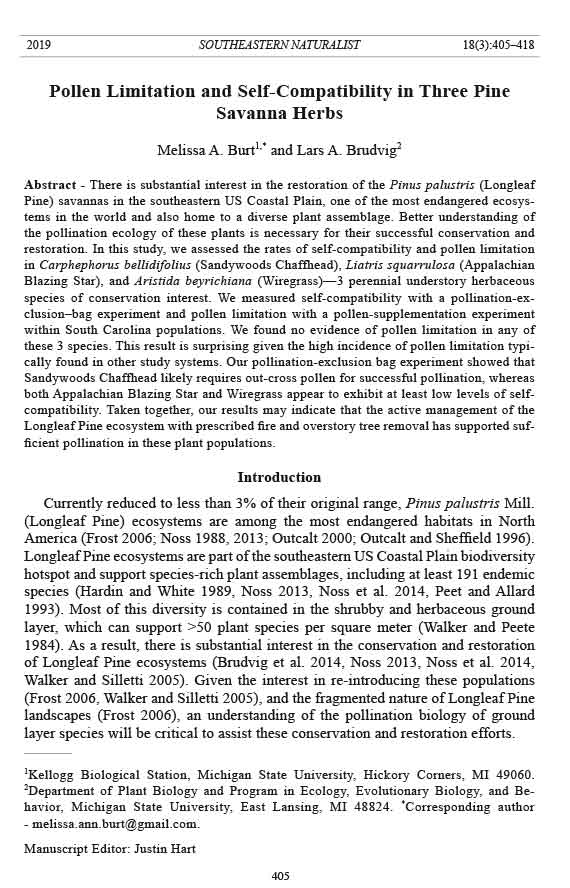

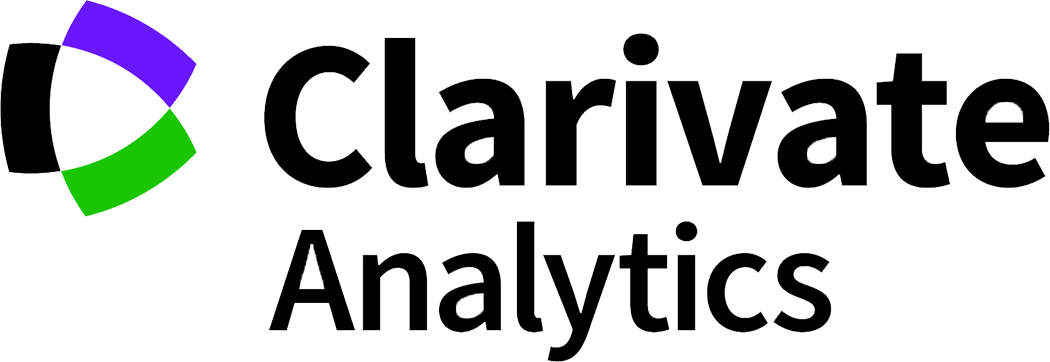
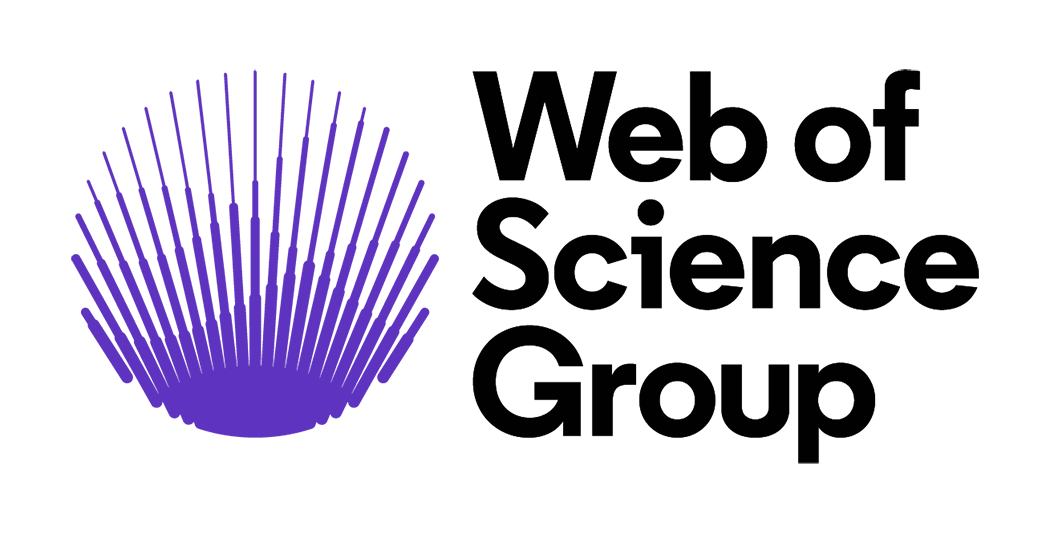





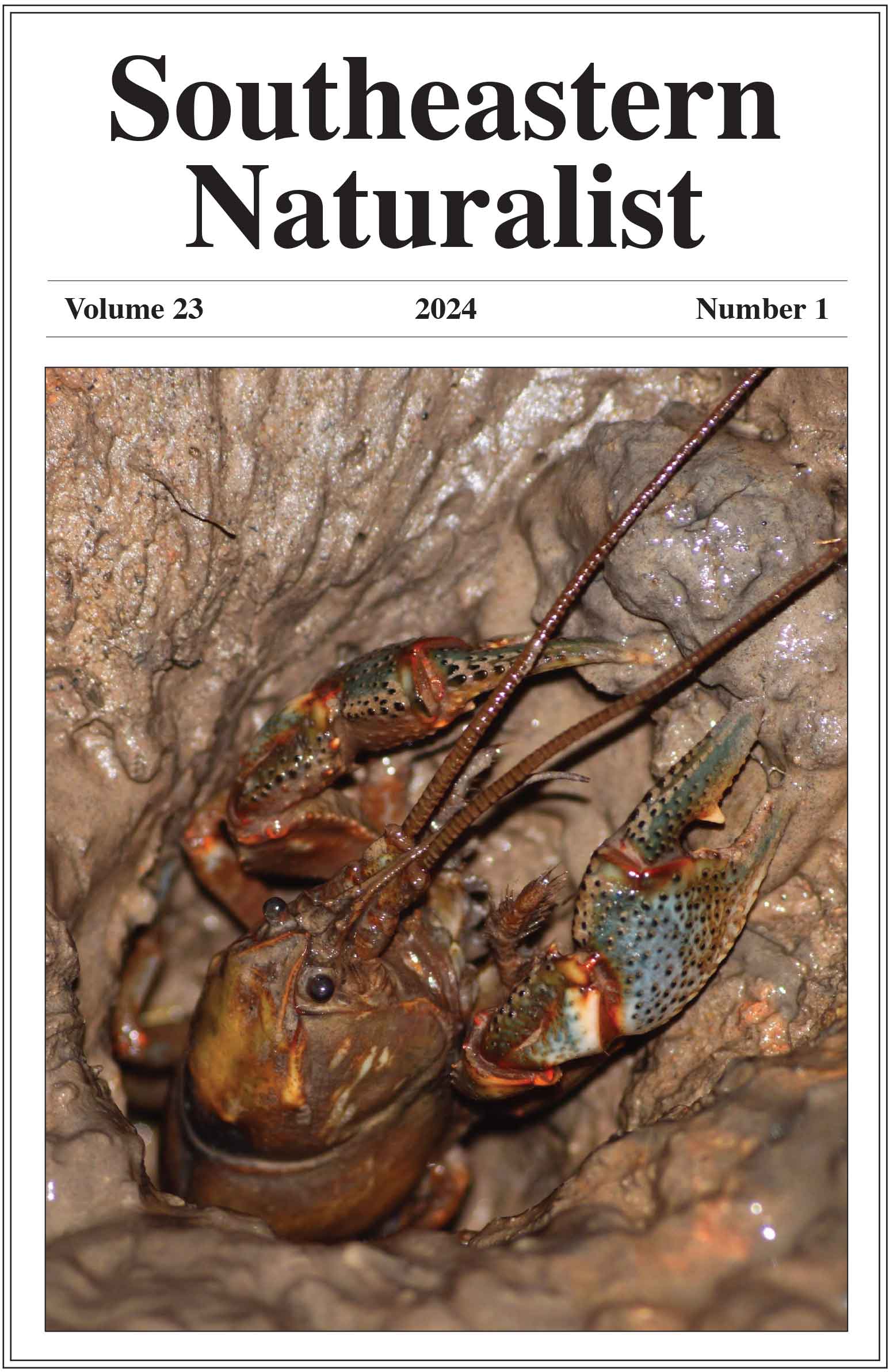
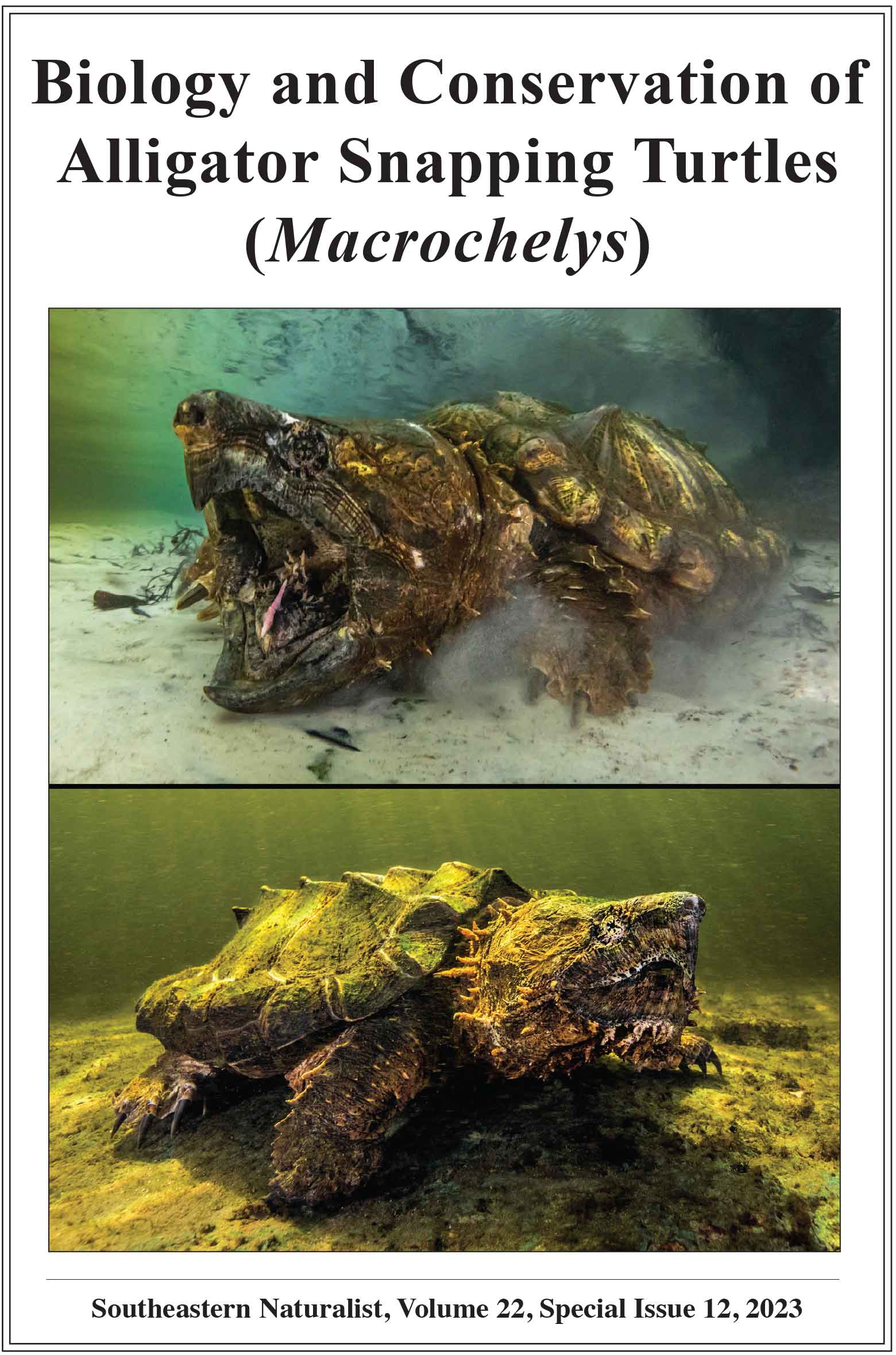


 The Southeastern Naturalist is a peer-reviewed journal that covers all aspects of natural history within the southeastern United States. We welcome research articles, summary review papers, and observational notes.
The Southeastern Naturalist is a peer-reviewed journal that covers all aspects of natural history within the southeastern United States. We welcome research articles, summary review papers, and observational notes.